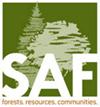新的基龄不变遗址指数模型的相对准确性
IF 1.5
4区 农林科学
Q2 FORESTRY
引用次数: 0
摘要
根据 Chapman-Richards 函数的约束版本,建立了一个新的基龄不变遗址指数模型。该模型与 Goelz 和 Burk(1992 年)的模型在一系列潜在基龄的相对准确性和平均偏差方面进行了比较。拟合上述模型的数据格式也进行了简化。在一组白云杉(Picea glauca [Moench] Voss)茎分析数据上比较这些模型表明,预测年龄的选择会影响模型的准确性和偏差。除了非常年轻的年龄外,新模型的相对准确性与 Goelz 和 Burk(1992 年)的模型相当。For.科学》40(2):341-348。本文章由计算机程序翻译,如有差异,请以英文原文为准。
Relative Accuracy of a New Base-Age Invariant Site Index Model
A new base-age invariant site index model was developed based on the constrained version of the Chapman-Richards function. It was compared with that of Goelz and Burk's (1992) in terms of relative accuracy and average bias across a range of potential base ages. The data format for fitting the above models was also simplified. Comparing the models on a set of white spruce (Picea glauca [Moench] Voss) stem analysis data indicated that the choice of predictor age influences the models' accuracy and bias. Except for very young ages, the new model performed as well as that Goelz and Burk's (1992) model in relative accuracy. For. Sci. 40(2):341-348.
求助全文
通过发布文献求助,成功后即可免费获取论文全文。
去求助
来源期刊

Forest Science
农林科学-林学
CiteScore
2.80
自引率
7.10%
发文量
45
审稿时长
3 months
期刊介绍:
Forest Science is a peer-reviewed journal publishing fundamental and applied research that explores all aspects of natural and social sciences as they apply to the function and management of the forested ecosystems of the world. Topics include silviculture, forest management, biometrics, economics, entomology & pathology, fire & fuels management, forest ecology, genetics & tree improvement, geospatial technologies, harvesting & utilization, landscape ecology, operations research, forest policy, physiology, recreation, social sciences, soils & hydrology, and wildlife management.
Forest Science is published bimonthly in February, April, June, August, October, and December.
 求助内容:
求助内容: 应助结果提醒方式:
应助结果提醒方式:


